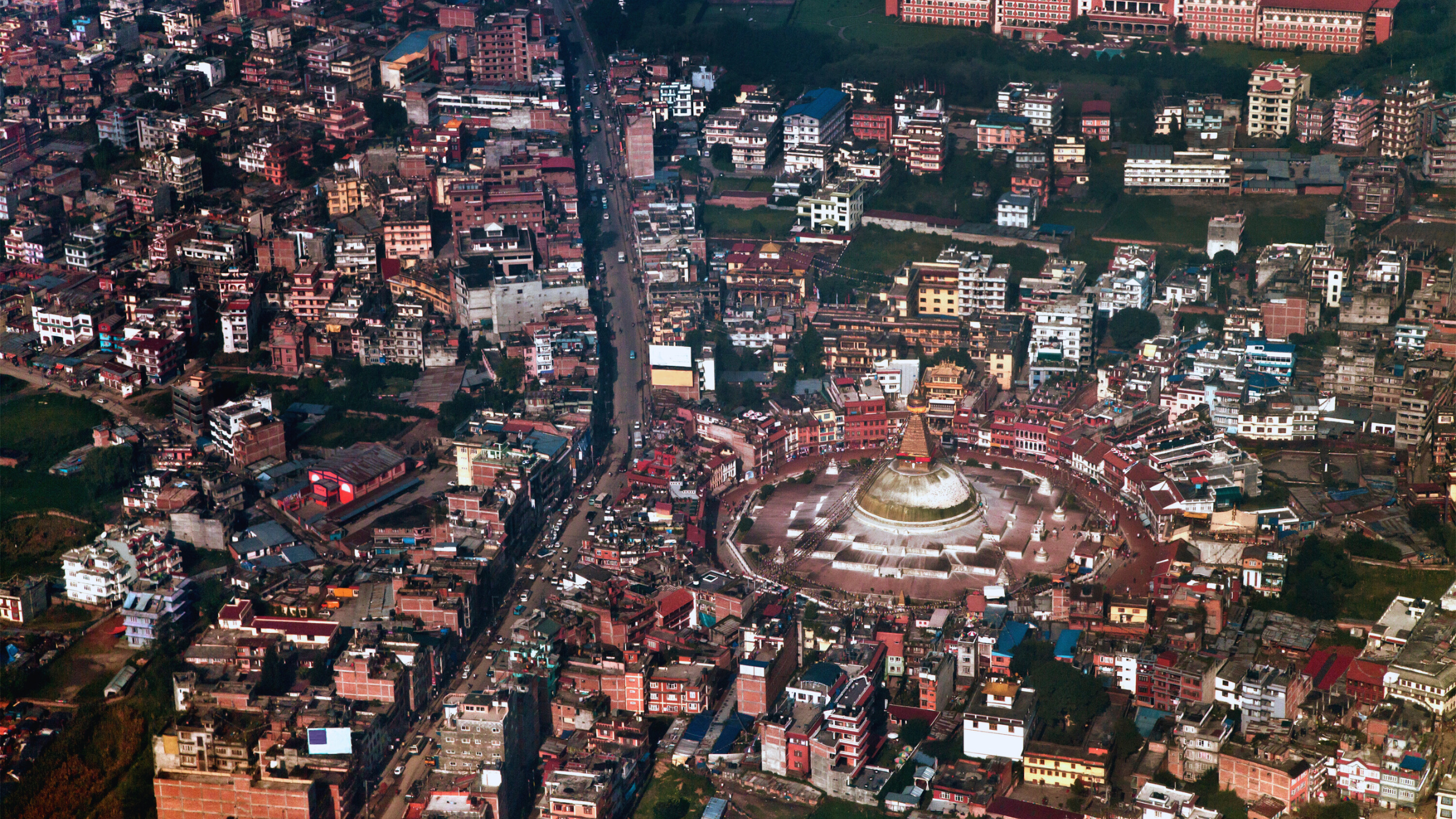
Kathmandu, the capital of Nepal, is a city rich in history, culture, and heritage, making it one of the most significant cultural hubs in South Asia. The city has been a crossroads of diverse civilizations for centuries and is home to several UNESCO World Heritage Sites. Here’s an overview of Kathmandu’s rich heritage
Historical Sites Kathmandu’s rich heritage in Nepal
Kathmandu has always been a hub for trade, culture, and politics. Its existence was estimated around the 3rd century BCE. It lay on the conjunction of the ancient trade routes of India, Tibet, and China, hence constituting it as the strategic and cultural meeting spot. Kathmandu has long been the epicenter of trade, culture, and politics. The estimations are that it was established around the 3rd century BCE. Its location along ancient trade routes between India, Tibet, and China made it a strategic and cultural meeting point.
Religious and Cultural Diversity
Kathmandu has become a melting pot of religious traditions: thriving together are Hinduism, Buddhism, and even a variety of indigenous beliefs. Not only does the city house Hindu temples, but also Buddhist stupas, thus truly reflecting the pluralistic nature of the city. As a matter of fact, the feature of its heritage is the coexistence of these religious traditions.
UNESCO World Heritage Sites
Kathmandu Valley is renowned for its concentration of ancient monuments and landmarks. Several of these have been designated UNESCO World Heritage Sites. Some notable sites include:
- Swayambhunath (Monkey Temple): This ancient stupa, perched on a hilltop, is one of the most iconic landmarks in Kathmandu. It is both a Buddhist and Hindu site, often associated with the creation of the Kathmandu Valley. There was stupa is surrounded by numerous shrines and temples.
- Pashupatinath Temple: A sacred Hindu temple dedicated to Lord Shiva, it is one of the holiest temples in Nepal and a major pilgrimage site for Hindus worldwide. Situated on the banks of the Bagmati River, Pashupatinath is also famous for its cremation ghats.
- Boudhanath Stupa: One of the largest stupas in the world, Boudhanath is an important pilgrimage site for Buddhists. The stupa’s massive mandala, surrounded by monasteries, makes it an iconic symbol of Tibetan Buddhism.
- Durbar Square: Kathmandu Durbar Square is the historic royal palace complex, surrounded by temples, shrines, and courtyards. It was the former royal palace of the Malla kings and is a beautiful example of traditional Nepali architecture. Although damaged in the 2015 earthquake, many structures have been restored.
- Patan Durbar Square and Bhaktapur Durbar Square: Both of these historical squares, located in the nearby cities of Patan and Bhaktapur, are part of the Kathmandu Valley’s UNESCO-listed sites. They feature impressive Newar architecture, temples, and palaces.
Architectural Significance of Kathmandu’s Temples and Monuments
Kathmandu’s architecture is a blend of traditional Nepali, Hindu, Buddhist, and Tibetan styles. The intricate wood carvings on temples, the brickwork in pagoda-style buildings, and the golden roofs of shrines all reflect the city’s deep cultural and religious traditions.
- Newar Architecture: The Newar people, who are the indigenous inhabitants of the Kathmandu Valley, are known for their distinct architectural styles. Traditional Newar homes, temples, and stupas often feature elaborate wooden windows, intricately carved doors, and tiered roofs.
- Thangka Painting and Handicrafts: Kathmandu is also famous for its traditional arts and crafts, including thangka paintings (Buddhist scroll paintings), metalwork, wood carving, and pottery. The city’s markets, such as those in Thamel and Asan, offer an array of these handicrafts.
Hidden Gems: Lesser-Known Historical Places in Kathmandu
While Kathmandu is famous for its iconic landmarks like Swayambhunath, Pashupatinath, and Durbar Square, the city is also home to several lesser-known but equally fascinating historical sites that are worth exploring. These hidden gems offer a more intimate experience of Kathmandu’s rich cultural heritage.
- Kastamandap: Located in the heart of the Old City, Kastamandap is a wooden structure believed to be the origin of the city’s name, “Kathmandu.” The temple is an architectural marvel, built entirely of wood, and was originally used for community gatherings. Although damaged in the 2015 earthquake, restoration efforts are underway.
- Ranipokhari: A beautiful historical pond built by King Pratap Malla in the 17th century, Ranipokhari (also called Queen’s Pond) is a tranquil spot in the middle of the city. It’s surrounded by a lovely garden and is often overlooked by tourists, making it an excellent spot to relax.
- Vishnu Mandir (Basantapur): Tucked away in the narrow alleys of the Durbar Square area, this smaller Hindu temple dedicated to Lord Vishnu has remarkable carvings and historical significance, often missed by the crowds around the larger monuments.
- Chandragiri Hills: Though a little outside the city center, Chandragiri offers a beautiful vantage point for panoramic views of Kathmandu Valley and the Himalayas. There is also a historic temple at the summit, and it offers a quieter experience compared to more heavily visited locations.
- Sundhara: A historical water fountain built in the 17th century during the reign of King Pratap Malla. Located near the Kathmandu Durbar Square, this site was once a major water source for the city’s residents.
Also Read : World Heritage Sites of Kathmandu Valley
Preservation Efforts for Kathmandu’s Historical Heritage
Kathmandu’s historical sites have faced significant challenges in recent years, particularly due to natural disasters, urbanization, and the pressures of tourism. However, efforts are being made to preserve the city’s cultural heritage for future generations.
- Post-Earthquake Restoration: The 2015 earthquake caused widespread damage to many of Kathmandu’s iconic monuments, including the temples and buildings in Kathmandu Durbar Square, Swayambhunath, and Patan Durbar Square. Since then, restoration projects have been ongoing, often with the assistance of international organizations and experts. Some sites have been painstakingly rebuilt using traditional methods, while others are still in the process of being restored.
- Government Initiatives: The government of Nepal, along with UNESCO, has been working on long-term preservation projects for historical buildings and monuments. This includes funding for structural restoration, preservation of cultural practices, and promoting sustainable tourism practices to reduce the impact on the sites.
- Local and International Collaborations: Several NGOs, such as the Kathmandu Valley Preservation Trust, are involved in community-based preservation efforts. These organizations focus on restoring both physical structures and intangible cultural practices, such as traditional arts, crafts, and rituals that are part of the city’s heritage.
- Heritage Walks and Education: Local institutions and cultural centers offer heritage walks that help educate both locals and tourists about the significance of these sites. These walks are not just about visiting monuments but also understanding the history and the importance of preservation.
Tourist Tips for Visiting Historical Sites in Kathmandu
Kathmandu’s historical sites can be overwhelming for first-time visitors. Here are some helpful tips to make the most of your visit:
- Start Early: Many of the popular historical sites, such as Kathmandu Durbar Square and Pashupatinath, can get crowded later in the day. Arriving early gives you a more peaceful experience and the opportunity to photograph these sites without too many tourists around.
- Dress Respectfully: As many of the historical sites are religious in nature, it’s important to dress modestly when visiting. Avoid wearing revealing clothing, and be prepared to remove shoes when entering temples or sacred areas.
- Hire a Local Guide: While some sites are self-explanatory, a local guide can provide invaluable insights into the history, culture, and significance of the places you visit. Guides can also help navigate the complex layout of sites like Durbar Square or Swayambhunath.
- Respect Local Customs: Be mindful of local customs, especially at temples and holy sites. For instance, you may be asked not to point your feet at religious statues or images. Also, always ask for permission before taking photographs, particularly of people or sacred rituals.
- Wear Comfortable Shoes: Many historical sites in Kathmandu involve walking on cobblestone streets and uneven paths. Comfortable shoes will make your exploration much more pleasant.
- Stay Hydrated: Kathmandu can get quite hot during the day, so it’s important to stay hydrated, especially if you’re walking around for several hours.
Embracing the Legacy of Kathmandu
The historical and cultural heritage of Kathmandu manifests as a treasure trove of ancient architecture, spiritual practices, and timeless customs. As the heart of Nepal’s plush heritage, it offers the rare opportunity for the visitor to experience the interplay of the ancient and modern. Be it a wonder at the intrinsic carvings displayed at Kathmandu Durbar Square, exploring Bhaktapur’s quiet lanes, or being a part of and witnessing festivals that include Indra Jatra, cities call people in search of connecting their present with the past.
Also, modernization and natural disasters are challenges in themselves, but efforts are being made to preserve the cultural heritage in Kathmandu. It is important that locals and tourists alike contribute to its safeguard by respecting the places but also by contributing to sustainable tourism.
By embracing the legacy of Kathmandu, visitors can understand and more deeply appreciate the traditions that continue to mold the city, even as it presses headlong into modernization. Whether a keen history enthusiast or a casual traveler, Kathmandu offers an unmatched journey of times past, culture, and spirituality.
FAQs
1. What are the must-visit historical places in Kathmandu?
Some must-visit sites include Kathmandu Durbar Square, Swayambhunath Stupa, Pashupatinath Temple, and Boudhanath Stupa.
2. What is the best time of year to visit Kathmandu’s historical places?
The best time is during the spring (March to May) and autumn (September to November) when the weather is pleasant for sightseeing.
3. Is there an entrance fee for historical sites in Kathmandu?
Yes, most prominent sites like Kathmandu Durbar Square and Pashupatinath Temple have entrance fees for tourists.
4. Can I take photos at the historical sites?
– Photography is generally allowed, but some temples may restrict indoor photography, so it’s best to check local rules.
5. Are guided tours available for historical places in Kathmandu?
Yes, many tours are available, and hiring a guide is recommended to understand the historical and cultural significance.
DEX analytics platform with real-time trading data – https://sites.google.com/walletcryptoextension.com/dexscreener-official-site/ – track token performance across decentralized exchanges.
Privacy-focused Bitcoin wallet with coin mixing – https://sites.google.com/walletcryptoextension.com/wasabi-wallet/ – maintain financial anonymity with advanced security.
Lightweight Bitcoin client with fast sync – https://sites.google.com/walletcryptoextension.com/electrum-wallet/ – secure storage with cold wallet support.
Full Bitcoin node implementation – https://sites.google.com/walletcryptoextension.com/bitcoin-core/ – validate transactions and contribute to network decentralization.
Mobile DEX tracking application – https://sites.google.com/walletcryptoextension.com/dexscreener-official-site-app/ – monitor DeFi markets on the go.
Official DEX screener app suite – https://sites.google.com/mywalletcryptous.com/dexscreener-apps-official/ – access comprehensive analytics tools.
Multi-chain DEX aggregator platform – https://sites.google.com/mywalletcryptous.com/dexscreener-official-site/ – find optimal trading routes.
Non-custodial Solana wallet – https://sites.google.com/mywalletcryptous.com/solflare-wallet/ – manage SOL and SPL tokens with staking.
Interchain wallet for Cosmos ecosystem – https://sites.google.com/mywalletcryptous.com/keplr-wallet-extension/ – explore IBC-enabled blockchains.
Browser extension for Solana – https://sites.google.com/solflare-wallet.com/solflare-wallet-extension – connect to Solana dApps seamlessly.
Popular Solana wallet with NFT support – https://sites.google.com/phantom-solana-wallet.com/phantom-wallet – your gateway to Solana DeFi.
EVM-compatible wallet extension – https://sites.google.com/walletcryptoextension.com/rabby-wallet-extension – simplify multi-chain DeFi interactions.
All-in-one Web3 wallet from OKX – https://sites.google.com/okx-wallet-extension.com/okx-wallet/ – unified CeFi and DeFi experience.

Leave a Reply